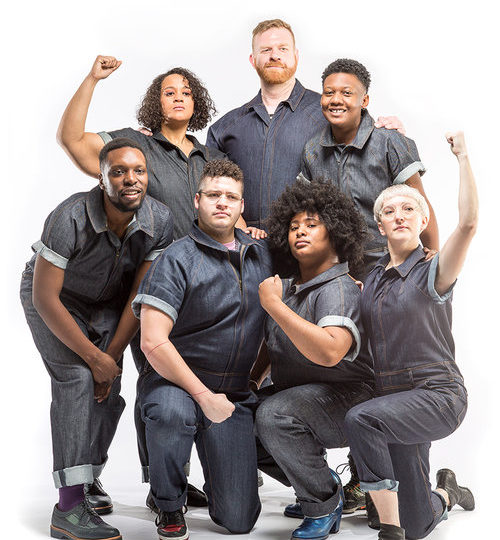When I was browsing the May 2019 issue of Fashion at the dentist office last week I was surprised to see an article devoted to luxury workwear. I was surprised because I’m used to thinking of workwear, particularly the jumpsuit, as a-fashionable.
Jumpsuit love
I’m incredibly drawn to the idea of jumpsuits as regular wear. Regular readers of this blog may be able to guess what originally inspired this interest.

The Royal Dress Society and the Jumpsuit Project
But, this interest took on more specific content when I heard Abigail Glaum-Lathbury and Maura Brewer, members of the Rational Dress Society (RDS), interviewed on CBC’s The Current last year. The RDS Jumpsuit project is an “experiment in counter-fashion,” a mix of design, performance art, and political action intended to challenge the waste generated by fast-fashion industry and an often unreflective mindset of consumption. Having just returned from my “Spring Speaking Tour,” I find jumpsuits appealing in a new way. Packing would be more simple!
Forging solidarity . . .
The jumpsuit project is also an experiment in how fashion might express a collective identity. For RDS, the jumpsuit can be an object which symbolizes equality and solidarity. According to the RDS website, the jumpsuit is a “ungendered, multi-use monogarment to replace all clothes in perpetuity.” Although only in four styles (fitted or unfitted, with short- or long-sleeves), the jumpsuit comes in 248 sizes, to capture the myriad ways in which human bodies are shaped differently. The pattern is available online for free.
In the CBC interview, Brewer says, “Well so I think capitalism and fashion are really closely intertwined and that capitalism tells us that we are all competing with each other all the time and fashion has always sort of served as an extension of that, a way to produce hierarchies and social space; like who’s cool and who isn’t cool and who can afford what. And our clothes are sort of signaling our differentness all the time. And so for us it’s important to think about the ways that clothes might be able to bring us together and produce community.”
. . . or conformity . . .
For Sara Black McCulloch, the author of the Fashion article, in her personal experience, workwear has been a force of assimilation to a group identity where uniqueness is unimportant, and perhaps actively discourages. McCulloch describes how her retail uniform functioned as “a symbol of [ . . .] compliance,” one of “18 rules (one of which is a reminder to smile) that are supposed to assimilate me into the role” of good retail worker.
Jumpsuits and other homogenized workwear have often marked differences between groups. In the nineteenth century, workwear was affordable and durable for factory workers, and differentiated workers from employers and owners. The kind of counter-fashion at the core of the RDS’ Jumpsuit Project seeks to harness this history for liberatory ends. No longer is the jumpsuit a marker of conformity! The project is conscious of the history its bringing forth into the present as a means to challenge fast fashion and consumer capitalism.

. . . or inequality
McCulloch argues that designers are attracted to jumpsuits and other workwear because of its functionality. But she thinks this trend masks growing social inequalities: “The current embrace of utility, especially in high fashion and affluent circles, is not a gesture of solidarity or even an effort to blend in with the working class, it’s a flagrant display of the freedom that so few people have today” (p. 35).
Hope for the future
I had to laugh when I read the article, and I thought back to the promise of the jumpsuit emphasized by the RDS. Does capitalism co-opt everything, I thought? In some ways, yes. McCulloch calls attention to how class differences manifest in this new trend towards luxury jumpsuits. A group identity, or at least a class position, reveals itself. McCulloch states, “What we wear can reinforce power imbalances or subvert them.” Luxury workwear seeks to capitalize of functionality, but as a product of fast fashion has sacrificed its durability. So, the functionality is really a sham, and these products are importantly ahistorical.
This makes me hold out hope for the jumpsuit, à la RDS.
PS
Perhaps Star Trek uniforms are closer to luxury workwear than to RDS jumpsuits. After all, how many different styles of official uniform does one organization need?

Happy Earth Day!
